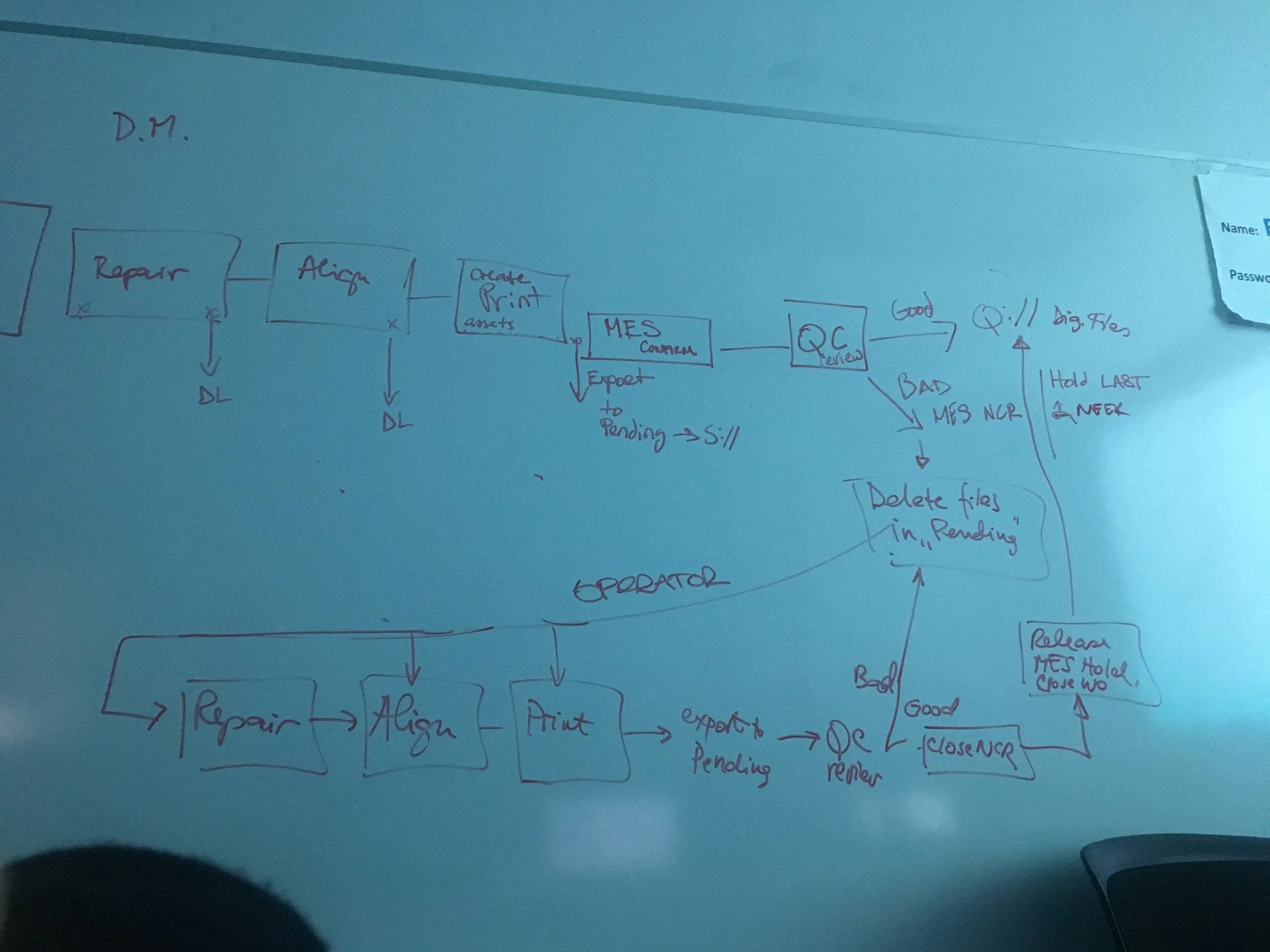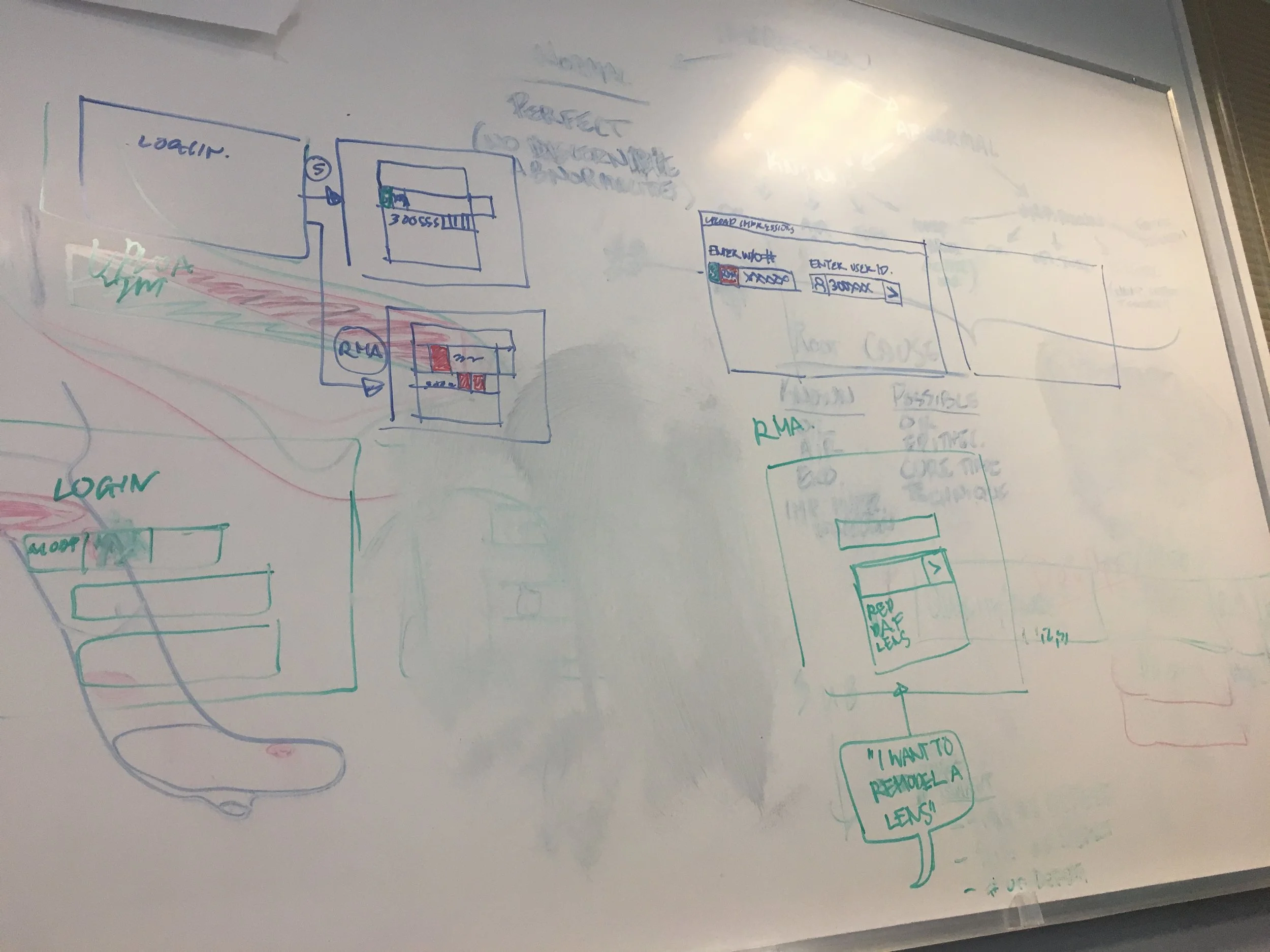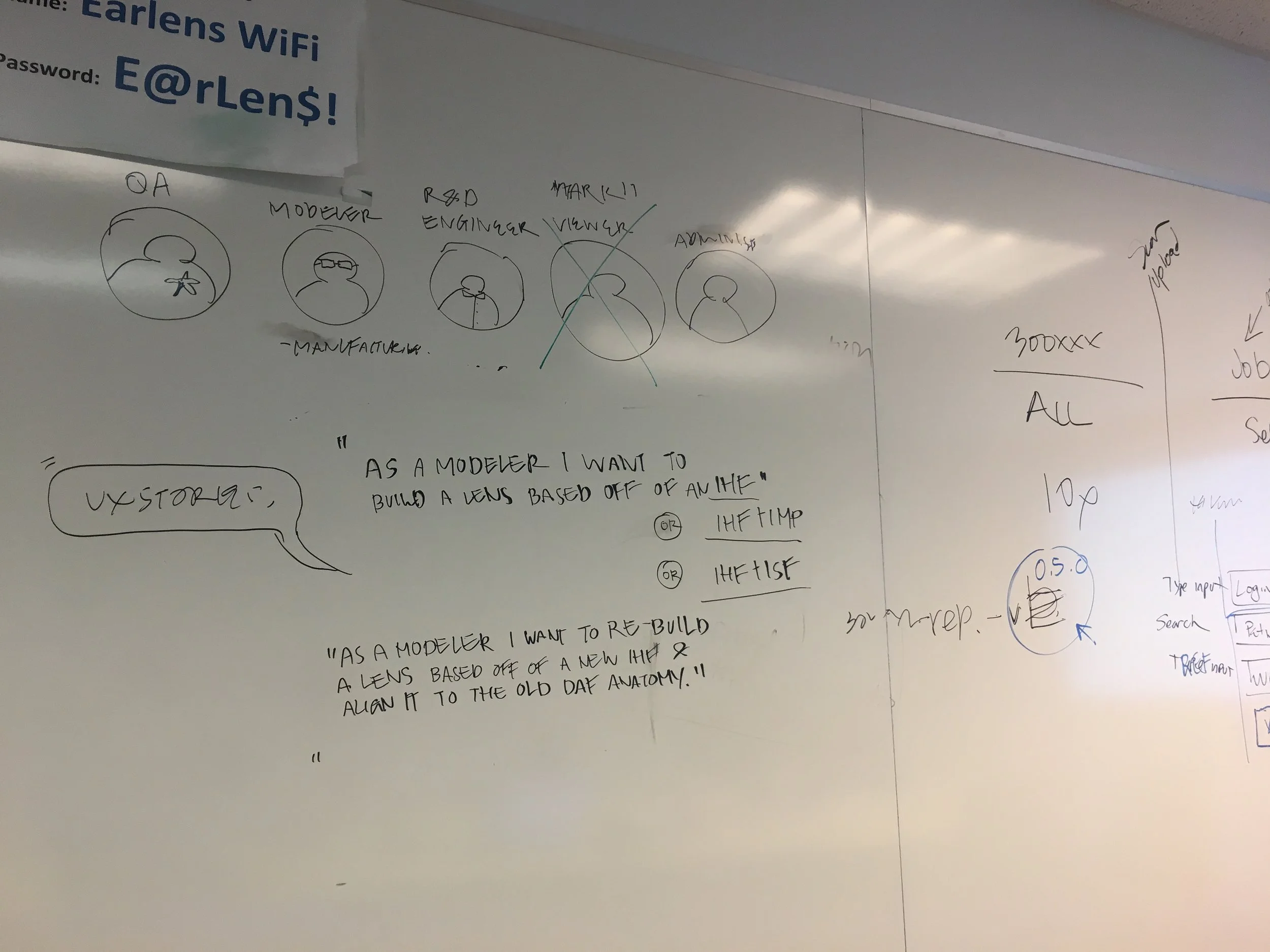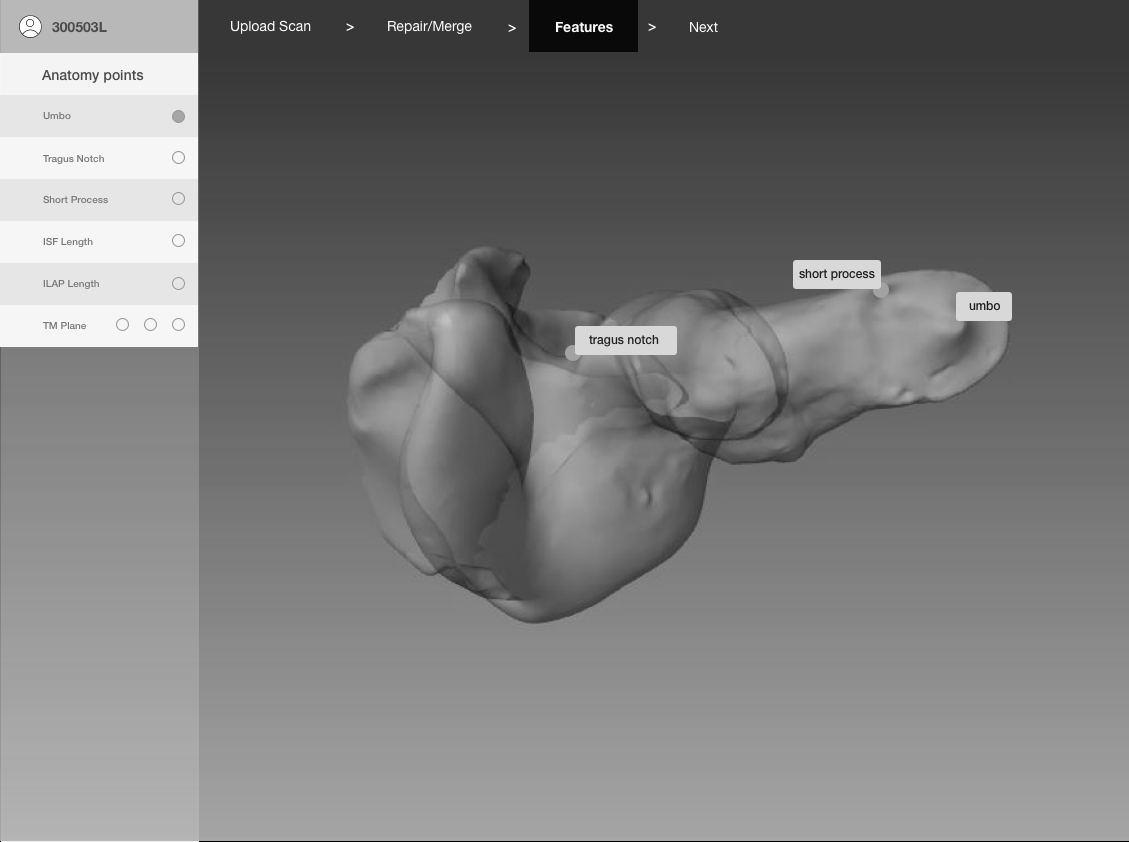3D Digital Manufacturing webapp in the cloud
THE ASK
I was the lead UX/UI designer for EarLens’ 3D environment manufacturing webapp after identifying the need for a liaison between engineering and manufacturing teams three months into the startup. The tool imports a patient's digitally scanned ear anatomy and specialists custom model 3D-printed molds and store them into a patient management system. The bio-mechanical hearing aid “lens” is then assembled and fitted onto a patient’s eardrum at the ENT’s clinic for life-changing sound.
MY ROLE
Lead UX designer— research, IA, wireframes, testing, visuals
TEAM
Turlif Vilbrandt (Engineering lead)
Tenzing (Engineering front-end)
Long Phan (Product manager)
Dr. Perkins fitting a patient with their Earlens at the EarLens Clinic.
THE PROBLEM
↓
How might we teach Earlens’ 3D modeling specialists the ear's anatomy to precisely repair and build patients' unique anatomy scans into a custom manufactured device through EarLen's software?
USER GOALS
Wants to streamline workflow with intuitive UI controls and frictionless quality approval protocols.
BUSINESS GOALS
Build and ship 20 lenses and 15 light tips per day, comply with HIPAA
ENGINEERING GOALS
Define manufacturing and anatomical constraints for range of anatomies, no user drop offs in order to capture all possible workflows with custom manufacturing
THE GOAL
How might we digitally create a precise representation of each custom ear’s anatomy to capture micron-level product quality precision?
↓
Approachable and Learnable Tools
After a mold of the patient’s ear canal is taken at the clinic, specialists scan, repair and identify anatomical landmarks using digital tools. I created personas and user stories to align the engineering team and management on their goals. We created features in the process-driven tool bar for surface selection, removal, reconstruction by referencing other familiar/simple creative and 3D programs from Sketch, Autodesk and Adobe.
Streamlined, Traceable Workflows
Collaboration sessions were crucial to building the right features and prioritizing where patient data was stored in compliance with HIPAA and patient safety down the line. I worked with engineering to understand how patients files were pulled from the database and to mitigate errors of patients pulling the wrong file.
I built prototypes in Invision and organized testing sessions with our specialists to gather feedback.
Consistent, Educational Feedback from the System
The 3D environment can be intimidating for new specialists training how to use 3D programs. We created intuitive 3D navigation controls, manufacturing stage modules and a feedback system educating specialists on niche knowlege so that interactions optimized manufacturing speeds while automating repetitive actions in the background.
OUTCOME
















































